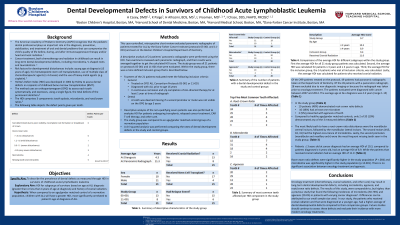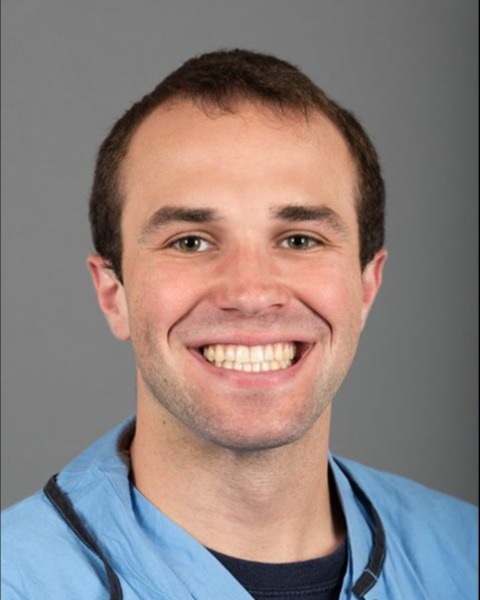Growth & Development
37 - Dental Developmental Defects in Survivors of Childhood Acute Lymphoblastic Leukemia


Andrew F. Casey, DMD
Pediatric Dental Resident
Boston Children’s Hospital, Boston, MA
Harvard School of Dental Medicine
Brookline, Massachusetts, United States
Isabelle Chase, DDS
Director, Postgraduate Pediatric Dentistry
Boston Children's Hospital
Harvard School of Dental Medicine
Brookline, Massachusetts, United States- LV
Lynda Vrooman, MD
Boston Children's Hospital/Dana-Farber Cancer Institute

Katherine B. Page, Dental Student (she/her/hers)
DMD Candidate
Harvard School of Dental Medicine
Brookline, Massachusetts, United States- HA
Hesham Alhazmi, BDS, MS, DMSc
Boston Children's Hospital

Isabelle Chase, DDS
Director, Postgraduate Pediatric Dentistry
Boston Children's Hospital
Harvard School of Dental Medicine
Brookline, Massachusetts, United States
Presenting Author(s)
Co-Author(s)
Program Director(s)
Purpose: To describe the frequency of tooth developmental anomalies as measured through Holtta’s Defect Index (HDI) in survivors of childhood acute lymphoblastic leukemia (ALL), as a function of age at diagnosis.
Methods: This case-controlled, retrospective chart review evaluated panoramic radiographs of patients treated for ALL by the Dana-Farber Cancer Institute (protocols 05-001 and 11-001) and seen in the Boston Children’s Hospital Department of Dentistry. Of the 299 patients treated, 21 patients’ who had a panoramic radiograph following oncology treatment were reviewed using the HDI. The HDI comprises 3 components: tooth aplasia, microdontia, and root/crown ratios. From the panoramic radiograph, each tooth was evaluated and given a score based on the severity of defect present.
Results: Average age at ALL diagnosis was 4.3 years (range 1-15). Ten patients (48%) demonstrated root-crown ratio defects, 10 (48%) had at least one microdont, and 2 (9%) presented with agenesis of teeth. Compared to healthy age/gender matched controls, only 2 of 20 (10%) demonstrated any of the 3 measured defects. Patients under 3 years at cancer diagnosis had an average HDI of 10.3, compared to patients diagnosed at ≥ 4 years, had an average HDI of 8.9. Root-crown ratio defects were significantly higher in the study population (P >.004).
Conclusions: Oncology treatment (chemotherapy, cranial radiation, and other care) may result in long-term dental developmental defects, including microdontia, agenesis, and root/crown ratio defects. Future studies should continue to assess these defects, and evaluate their incidence with more modern oncology treatments.
Identify Supporting Agency and Grant Number:

.jpg)